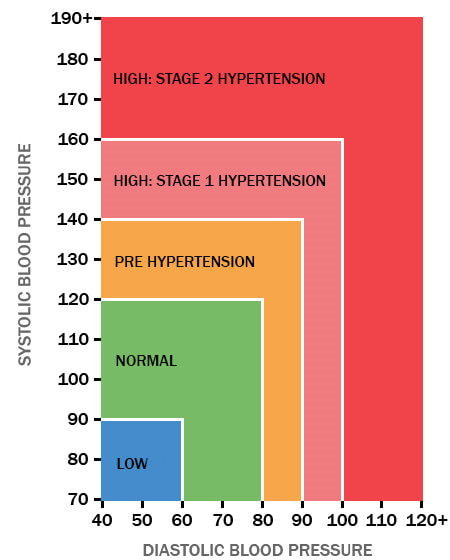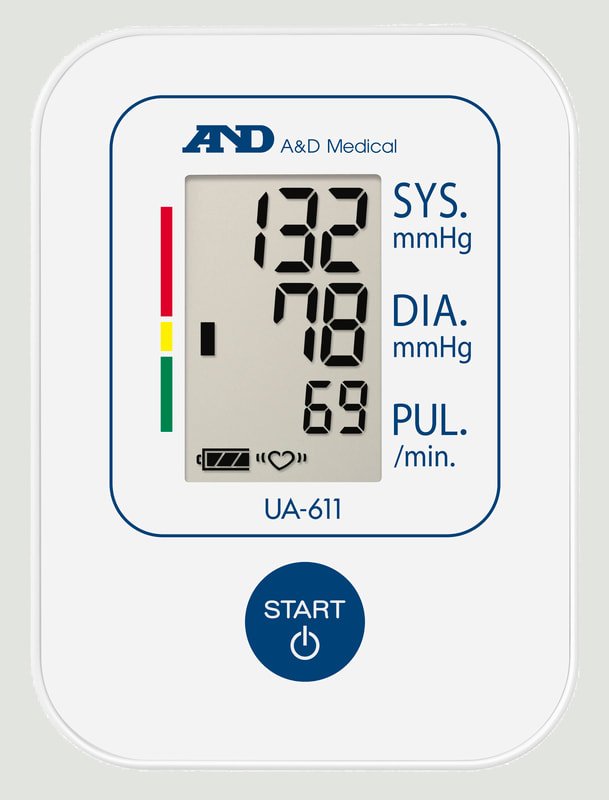A&D Medical UA-611 Upper Arm Blood Pressure Monitor As mentioned in our last blog, a couple of weeks ago I got into a discussion with a friend of mine who’s an EMT about the type of gear that you should have for emergency and disaster preparedness situations. As we discussed all of the items that we have in our “just in case” kit there was one item that he mentioned that I had never really considered – a blood pressure monitor. My friend’s point was that in many situations a key indicator of a person’s immediate health status, especially after an accident, is their blood pressure and heart rate (e.g. pulse). He said that in his line of work knowing these facts about a person often indicate how critical their situation is and how quickly the EMTs need to act. To state the obvious – blood pressure issues come in two varieties: high blood pressure (hypertension) and low blood pressure (hypotension) – and there’s a well-established range of normal blood pressure for nominal health. After a traumatic experience your body can react in a variety of ways. This may include injuries that are visible to you, but incidents can also have an impact on your internal systems and their functions. One high-level indicator of potential problems is high blood pressure. Blood pressure that is unusually high after an incident can be the result of a wide range of causes. Immediately after an incident it is not unusual to see a temporary spike in blood pressure. In response to stress or trauma, your body releases stress hormones into the bloodstream, including adrenaline. This can initiate a “fight or flight” response. Adrenaline also causes a temporary spike in blood pressure as your heart beats faster and blood vessels begin to narrow. Normally this spike will go away after a short period of time. With regards to high blood pressure not directly related to a specific incident, most people actually have no symptoms of hypertension – but some items to look for are:
On the other hand, low blood pressure, means that the pressure of blood circulating around the body is lower than normal, or lower than expected given the environmental conditions. With respect to emergency situations, the main causes of low blood pressure include blood loss (from either external or internal bleeding), dehydration, allergic reactions and infections. Low blood pressure can have a negative impact on the body. For example, vital organs (particularly the brain) may be starved of oxygen and nutrients if your blood pressure is too low. Symptoms of low blood pressure include:
So, based on our discussions, I decided to add a blood pressure monitor to our Disaster Preparedness kit. There are a wide range of these devices on the market ranging in price from $25 to $150. Since we were not adding a monitor for everyday use, we looked at the features that my friend recommended and focused on: 1) device quality and accuracy, 2) automated functionality, 3) clear readout display, 4) ability to measure systolic (top number) and diastolic (bottom number) blood pressures and heart rate. After some online research we purchased the A&D Medical UA-611 Upper Arm Blood Pressure Monitor since it met all of our criteria and was reasonably priced. The monitor has a one button control, comes with a latex-free/metal-free upper arm cuff, an easy to read display and an irregular heart beat (IHB) indicator. We’re not sure how often we’ll use the device – but my friend convinced me that it was worth having one in hand – so we’ve added it to our Disaster Preparedness gear. If you want more detail the A&D Medical UA-611 upper arm blood pressure monitor you can find it here:
https://medical.andprecision.com/product/ua-611/
0 Comments
Leave a Reply. |
What's On This Page?Here's where we post reviews, questions, answers, thoughts and other information that's of general interest to our followers in a blog format. Categories
All
Archives
August 2023
|
|
|
Copyright 2016-2024 Hiking, Camping and Shooting |




 RSS Feed
RSS Feed